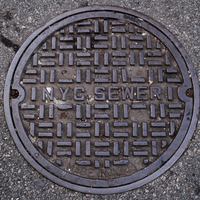
Sep 24, 2013
You may not give a second thought (or backward glance) to what the toilet whisks away after you do your business. But we got wondering -- where would we wind up if we thought of flushing as the start, and not the end, of a journey? In this short, we head out to trace the trail of sludge...from Manhattan, to wherever poop leads us.
This all started back when we were working on our Guts show, and author Frederick Kaufman told us about getting sucked in to the mystery of what happens to poop in New York City. Robert and producer Pat Walters decided to take Fred's advice and pay a visit to the North River Wastewater Treatment Plant... which turned out to be just the beginning of a surprisingly far-ranging quest.
Want some more sewer fun?
Read: As Robert and Pat report, some of that sewer sludge made it out into the ocean. Wonder what happened to it?